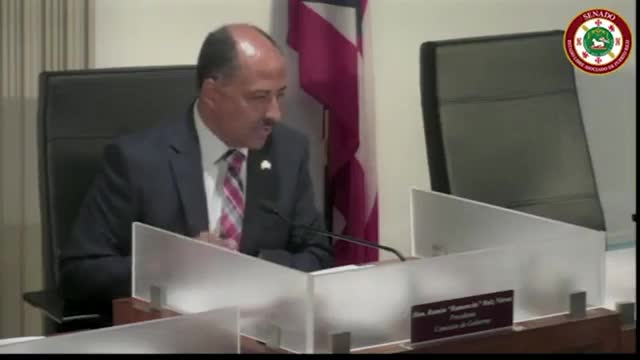Education officials discuss billion-dollar investment for air conditioning amid heat wave concerns
February 13, 2024 | Senate, Committees, Legislative, Puerto Rico

This article was created by AI summarizing key points discussed. AI makes mistakes, so for full details and context, please refer to the video of the full meeting. Please report any errors so we can fix them. Report an error »

In a recent public hearing held by the Government Commission on February 13, significant discussions emerged regarding the ongoing projects and responsibilities of the Office of Management and Educational Planning (OMEP). The meeting highlighted the collaborative efforts of various stakeholders, including engineers and educational administrators, in addressing critical infrastructure needs within the education sector.
The session began with a historical overview of past initiatives, referencing the involvement of key figures such as Engineer Basora and Licenciado Kester, who played pivotal roles in the development of educational projects. The discussions centered around substantial investments, including a proposed billion-dollar initiative aimed at enhancing school facilities, particularly focusing on the installation of air conditioning systems in response to rising temperatures and the need for improved learning environments.
Licenciada Yaniz Miranda, the administrative manager of OMEP, presented a detailed report emphasizing the agency's commitment to creating safe and conducive learning spaces for students. She underscored the urgency of addressing infrastructure challenges, particularly in light of previous discussions about funding and project implementation.
The meeting also featured a panel format, allowing for interactive dialogue among participants, which included representatives from the Department of Education and other relevant agencies. This approach aimed to foster collaboration and ensure that all voices were heard in the decision-making process.
As the hearing progressed, the focus shifted to the practical implications of the proposed projects, with an emphasis on the necessity of timely execution to meet the educational needs of the community. The discussions reflected a broader commitment to improving educational infrastructure, which is crucial for supporting student success and well-being.
In conclusion, the meeting served as a platform for addressing pressing educational infrastructure issues, with stakeholders expressing a shared responsibility to advance these initiatives. The next steps will likely involve further collaboration among agencies to finalize plans and secure the necessary funding to bring these projects to fruition.
The session began with a historical overview of past initiatives, referencing the involvement of key figures such as Engineer Basora and Licenciado Kester, who played pivotal roles in the development of educational projects. The discussions centered around substantial investments, including a proposed billion-dollar initiative aimed at enhancing school facilities, particularly focusing on the installation of air conditioning systems in response to rising temperatures and the need for improved learning environments.
Licenciada Yaniz Miranda, the administrative manager of OMEP, presented a detailed report emphasizing the agency's commitment to creating safe and conducive learning spaces for students. She underscored the urgency of addressing infrastructure challenges, particularly in light of previous discussions about funding and project implementation.
The meeting also featured a panel format, allowing for interactive dialogue among participants, which included representatives from the Department of Education and other relevant agencies. This approach aimed to foster collaboration and ensure that all voices were heard in the decision-making process.
As the hearing progressed, the focus shifted to the practical implications of the proposed projects, with an emphasis on the necessity of timely execution to meet the educational needs of the community. The discussions reflected a broader commitment to improving educational infrastructure, which is crucial for supporting student success and well-being.
In conclusion, the meeting served as a platform for addressing pressing educational infrastructure issues, with stakeholders expressing a shared responsibility to advance these initiatives. The next steps will likely involve further collaboration among agencies to finalize plans and secure the necessary funding to bring these projects to fruition.
View full meeting
This article is based on a recent meeting—watch the full video and explore the complete transcript for deeper insights into the discussion.
View full meeting